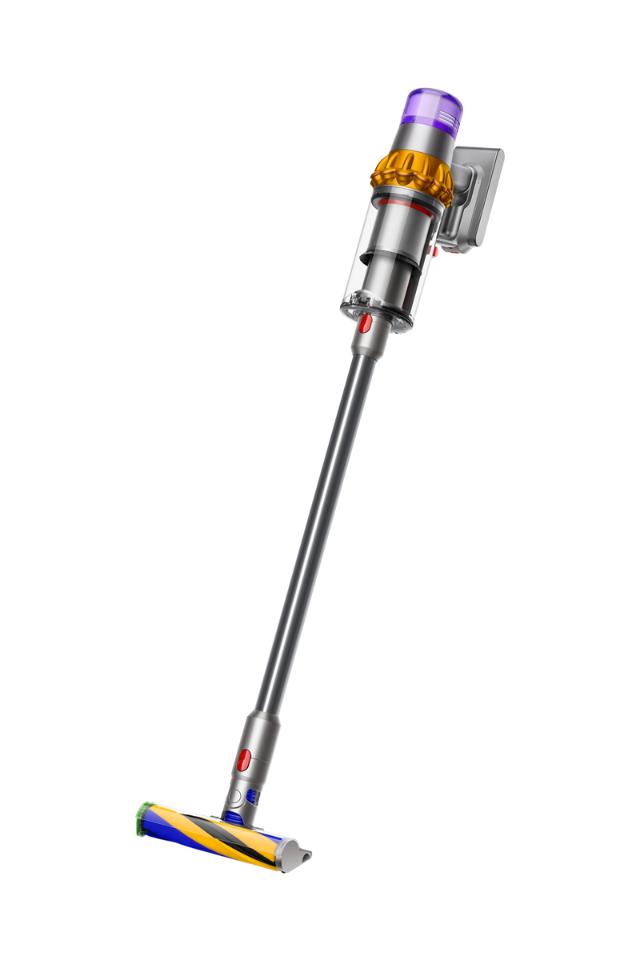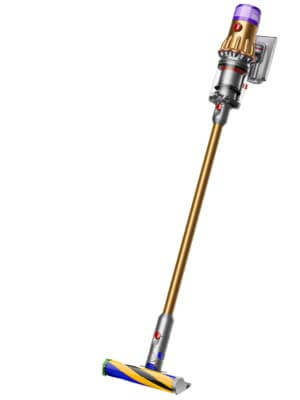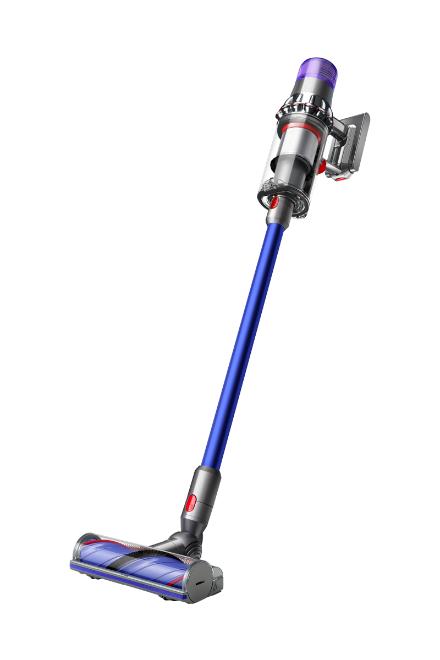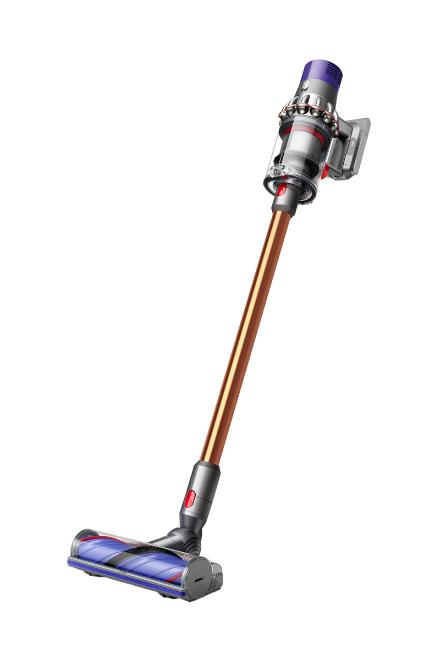We all want the same thing after a long day: clean floors and no crumbs sticking to our socks. But here’s the twist—with Dyson’s cordless vacuum lineup, it’s no longer just about suction. It’s about how smart your vacuum is, how long it lasts, and—let’s not lie—how cool it looks while doing it.
When we think about Dyson, it’s hard not to admire the engineering. We’re talking about a brand that made vacuums feel like something out of a sci-fi movie. But then you start looking closer: the V10, V11, V12, and V15 all kind of look the same… until they don’t. Each one brings a unique mix of power, features, and quirks that can either make your life easier—or leave you wondering if you should’ve spent just a little more.
So if you’re stuck deciding between them, we’ve been there. And we’ve done the deep dive. Let’s untangle this mess and help you pick the Dyson that actually fits your day-to-day cleaning reality.
Suction power: not just numbers, but what they mean
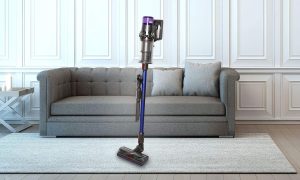
Let’s cut through the fluff—suction is where everything begins. The moment you feel that powerful pull of a Dyson vacuum, you kind of get it. But not all Dysons are born equal here.
The V10 and V12 max out at 150 airWatts, which already puts them above most cordless vacs out there. It’s enough to pull dirt from between floorboards and get pet hair off rugs, no doubt. But when we stepped up to the V11 and its 185 airWatts, there was a noticeable punch, especially on carpets. Then you hit the V15’s ridiculous 240 airWatts and honestly, it’s like cleaning with a jet engine.
That power comes from Dyson’s Hyperdymium motor spinning at 125,000 rpm. Yeah, it’s overkill for toast crumbs—but for embedded debris in thick rugs? It’s magic. So if your home has lots of carpets or you just hate going over the same spot twice, you’ll feel the difference.
Power modes: who knows what you’re cleaning?
Sure, all four models offer Eco, Auto, and Boost modes. But here’s the catch: only the V12 and V15 know when to switch automatically. Thanks to built-in sensors, they detect when you’re on carpet and boost suction without asking. It’s subtle, but it saves time, saves battery, and makes the whole process smoother.
The V10 and V11? You’ll need to manually switch modes if you want to go from hardwood to rug without losing cleaning power. It’s not the end of the world, but once you’ve experienced the automation on the V15 or V12, it’s hard to go back.
That real-time adjustment, especially with the V15’s responsiveness, makes you feel like the vacuum is doing the thinking for you. It’s that level of intuitive design that just… clicks.
Battery life: all equal, except when they’re not
On paper, they all promise up to 60 minutes of runtime. But let’s be real—you’re not vacuuming on Eco all the time, are you? In real usage, expect something closer to 40–45 minutes, especially if you’re toggling between surfaces.
The big difference? Battery removability. The V12, V11, and V15 let you swap the battery out with a click. That’s a game-changer for larger homes. You can have one charging while the other’s in use and never run out mid-job.
The V10? Fixed battery. Once it’s drained, you wait. No backup. That’s fine for smaller spaces, but it can be frustrating if you want to do a top-to-bottom clean in one go.
And just to note: charging times hover around 4 to 4.5 hours for all except the V10, which is a bit quicker at 3.5 hours. Not a huge difference, but worth keeping in mind.
Bin capacity: size does matter when you’re cleaning
If you hate emptying the bin mid-clean, you’re not alone. The V15, V11, and V10 all come with a solid 770 ml capacity. That’s enough for multiple rooms, sometimes even the whole flat, depending on how messy things are.
Then there’s the V12, which only gives you 350 ml. That smaller size does make the whole vacuum lighter and more manageable, but you’ll be heading to the trash can more often than you’d like.
Still, the hygienic point-and-shoot emptying system is consistent across all four models. No mess, no digging around. One lever, bin’s empty. Done.
Laser-guided cleaning: yes, we’re going there
This is where things get sci-fi. The V12 and V15 are equipped with the Laser Slim Fluffy head. A green laser shoots across the floor, revealing dust particles that you wouldn’t see otherwise. It’s weirdly satisfying.
And yes, it’s not just a gimmick. You will see more dirt than you expected. It pairs beautifully with the piezo sensor in these models that counts particles and displays the data in real time.
So you’re not just cleaning—you’re watching a microscopic war unfold on the screen. The V10 and V11 don’t have this. They clean just fine, but they don’t show you the story of the dirt you’re fighting. And once you’ve seen the laser in action? It’s addictive.
Screens: not essential, but they feel good
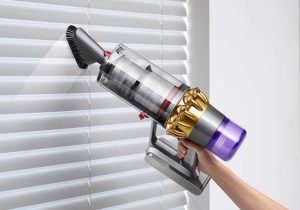
The V15, V12, and V11 come with a slick LCD screen that tells you remaining battery time, suction mode, and—on the V15 and V12—dust particle data in real time.
It’s not a dealbreaker, but we’ll admit: having a countdown clock instead of just guessing when the vacuum will die is incredibly useful. The V10 skips the screen entirely, which makes it feel a bit more old-school by comparison.
Cyclones and filters: the tech under the hood
This part doesn’t get talked about enough. All four vacuums use Dyson’s cyclonic separation tech, and every model here has a HEPA-grade filtration system that traps 99.99% of particles down to 0.3 microns. So whether you’ve got pets, allergies, or live in a dusty zone, you’re covered.
That said, the V10, V11, and V15 use 14 cyclones, while the V12 runs with 11. The impact on day-to-day suction? Minimal. But if you want max airflow and consistency, it’s a slight edge for the others.
Tools and accessories: who’s better equipped?
Let’s be honest—half the joy of a Dyson is in the attachments. All four come with the essential Motorbar head that handles carpets and hard floors, plus a crevice tool, combo tool, and mini motorized head. But the V15 upgrades to the Digital Motorbar, which adapts even more precisely to different floor types.
The V12 and V15 also pack in the Laser Slim Fluffy head, along with extra tools like a soft dusting brush and upholstery tool. That versatility is what makes them so appealing for multi-surface homes.
The V10 and V11? Still great, but the extras are more basic—good for general cleaning but not quite as adaptable for niche tasks.
And now… which one actually makes sense?
Okay, so here’s where we land after trying them all, comparing every mode, every bin dump, every awkward corner vacuumed at 10 p.m.
The Dyson V15 is the one that leaves no doubt. The suction is unmatched. The tech—laser, particle sensor, digital display—feels not only futuristic but practical. And it just makes the process smoother, smarter, and a little more fun. If you want the most complete, intelligent cordless vacuum out there, this is it.
The V12 surprised us. It’s light, nimble, and still packs in the smart features. But that small bin and lower suction keep it a step below the V15 if you have a larger home or messier floors.
The V11 feels like the last “classic” Dyson before they went fully digital and laser-obsessed. It’s powerful and well-built, but lacks the new conveniences that make a difference over time.
The V10? Still solid, still functional. But in this lineup, it feels like the sensible but slightly outdated sibling. No screen, no swappable battery, no smart adjustments. It gets the job done—but doesn’t elevate the experience.
So yeah, the V15 wins—not because it’s shiny and new, but because it does more, thinks more, and wastes less of your time. And that, in the middle of a hectic life, is exactly what we’re looking for.

